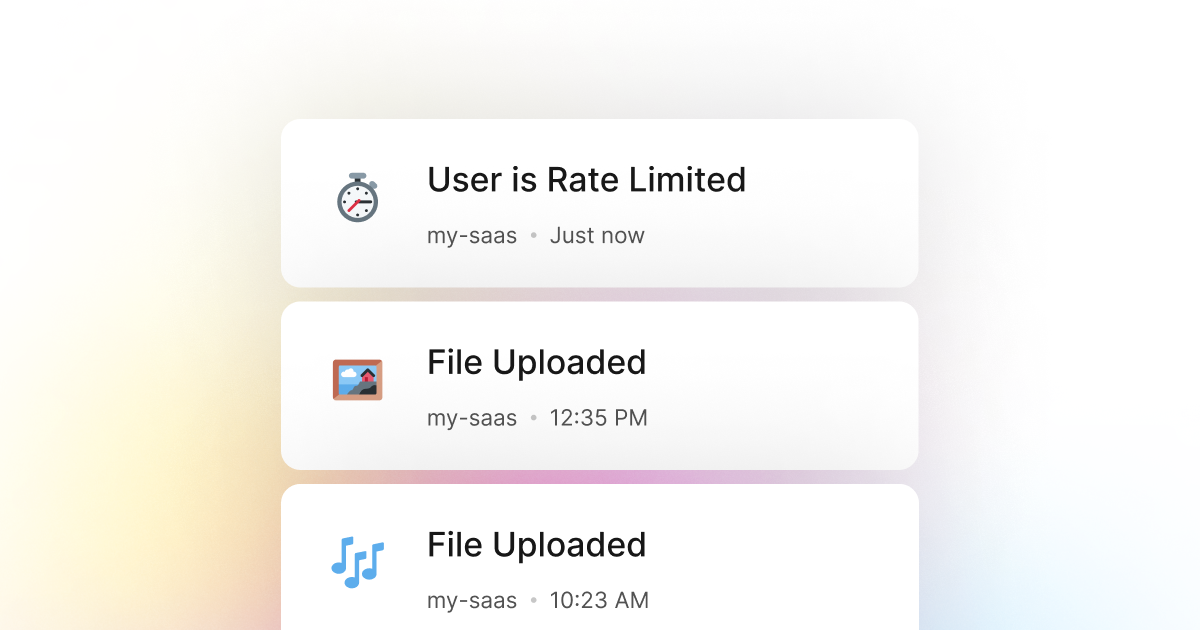When building a Python application, you often have to deal with throttling. Throttling is a way to limit the number of requests that a user can make to your application. This is a common problem when building applications that are used by a lot of users. For example, let's say you're building a Python application that allows users to upload files. You may want to limit the number of files a user can upload to 10 per minute. Again, this is a common problem and a great way to prevent users from abusing your service.
It is important to monitor when a throttle is being hit in your Python application. It can signify a problem with your implementation or that a user may be trying to take advantage and abuse your service. Therefore, it's vital to set up a system to properly monitor when the throttle is being hit and let you and your team know when something is wrong.
LogSnag is an excellent tool for this problem as it trivializes tracking events in your Python application and monitoring when the throttle is being hit. For example, you can use LogSnag to track an event when a user uploads a file. You can then set up a rule to notify you when a user has uploaded ten files. This way, you will know when a user has reached their limit, allowing you to take further action if needed.
Setting up LogSnag
- Sign up for a free LogSnag account.
- Create your first project from the dashboard.
- Head to settings and copy your API token.
Python code snippets
Copy and paste the following code into your Python project.
You are required to replace the YOUR_API_TOKEN with your API token and update the project and channel names.
Using Python with http.client
Using Python with Requests
Python integration details
When designing LogSnag, we aimed to create the most simple yet flexible event tracking tool possible. We wanted to make it easy for developers to integrate with their Python applications and to start tracking events in no time.
Today, LogSnag is what we believe to be the next generation of event tracking. It works excellent with Python and provides powerful features such as real-time event tracking, cross-platform push notifications, event filtering, user and product journeys, charts and analytics, and much more.
LogSnag provides a free plan to get you started with event tracking, and we can't wait to see how you use it. So please give it a try, and don't hesitate to reach out to us if you have any questions or feedback!
Other use-cases for LogSnag
- Monitor your CI/CD build status for your Python application
- Monitor your CPU usage in your Python application
- Monitor when database goes down in your Python application
- Monitor high disk usage in your Python application
- Monitor when a user changes their email address in your Python application
- Monitor failed logins in your Python application
- Monitor failed payments for your Python application
- Monitor memory usage in your Python application
- Monitor MySQL downtime in your Python application
- Monitor when a new feature is used in your Python application
- Monitor your Postgres downtime in your Python application
- Monitor Redis downtime in your Python application
- Monitor suspicious activity in your Python application
- Monitor when a user exceeds the usage limit for your Python service
- Get a notification when your Python code is done executing
- Send push notifications to your phone or desktop using Python
- Track canceled subscriptions in your Python application
- Track your Python cron jobs
- Track when a file is uploaded to your Python application
- Track when a form is submitted to your Python application
- Track payment events via Python
- Track user sign in events in Python
- Track user signup events via Python
- Track waitlist signup events via Python

